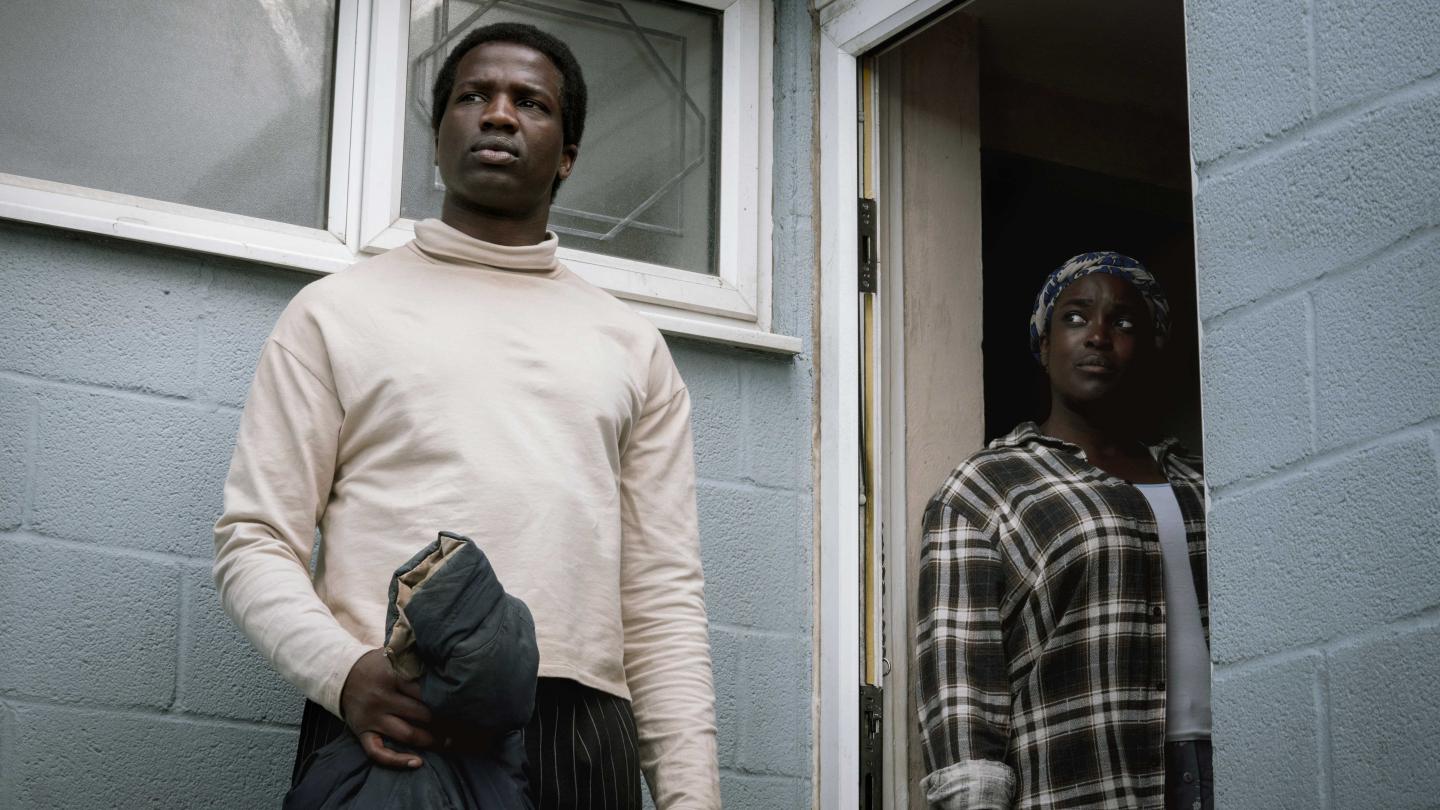‘His House’ and the Horrors of the UK Immigration System
Remi Weekes transposes the classic haunted house genre to a mouldering council flat inhabited by South Sudanese refugees
Remi Weekes transposes the classic haunted house genre to a mouldering council flat inhabited by South Sudanese refugees

By the beginning of the 1980s, the cinematic haunted house had downsized from gothic mansion to sunnier suburban home. In films such as The Amityville Horror (1979), The Entity (1982) and Poltergeist (1982), audiences watched for the first time as nuclear families not unlike their own were tormented by all manner of demons and phantoms. Around them revolved a new stock of nervous real-estate agents and bumbling plumbers, incurious town historians and unprincipled developers – types familiar to the upwardly mobile denizens of the American exurbs. Ancient curses and burial grounds displaced the real plot: the dissolution of the nuclear family and a generalized pessimism as to whether the Baby Boomer generation could maintain its economic status.
At the decade’s close, the haunted-house film was more usually a middle-class genre, which, at least in the US, meant that its harried protagonists were propertied and white. Several cycles of African American-themed hauntings provided a much needed corrective and expansion, in films such as Candyman (1992) and Bones (2001). More recently, the ‘Holy Ghost’ episode of Lovecraft Country (2020) sutured the ongoing legacies of slavery to haunted-house conventions. Mati Diop’s Atlantics (2019) expanded the genre internationally, featuring ghosts who return to Dakar having drowned in the titular ocean separating Senegal from Spain.

His House (2020) draws its ghosts from a similar expanse. Directed by Remi Weekes, and co-written by Felicity Evans and Toby Venables, the film centres on Bol (Sope Dirisu) and Rial (Wunmi Mosaku), two South Sudanese refugees who arrive in London after a harrowing boat journey that claims their daughter’s life. They are grief-stricken and shocked, but also relieved to have been taken into the British asylum system, which grants them a dilapidated council flat and a miniscule stipend. Bol is determined to put his past behind him and assimilate into British culture, while Rial is as wary of her new world as she is of her husband’s newfound enthusiasm for the English footballer Peter Crouch.
What follows is a taut, at times brilliant, reworking of the haunted-house genre that, if anything, can honestly answer why a family tormented by ghosts doesn’t simply move out. The protagonists’ council flat is a vermin-infested, two-storey affair surrounded by wraithlike white neighbours. The locals are racist, the medical administration thoughtless and Rial becomes a victim of a hate crime at the hands of three Black British teenagers. When the house’s peeling walls disgorge a phantom that may or may not be the couple’s daughter, struggles ensue: between Bol and Rial, between the phantom and the couple, between the trio’s past and future. The asylum administration won’t grant the couple a new house; Rial becomes convinced that the phantom is telling them to return to Southern Sudan, while Bol refuses to volunteer for deportation.

‘This is my house!’ Bol screams at his ghostly tormentors, echoing George Lutz’s similar line from The Amityville Horror decades earlier. Of course, Bol’s house is not contractually his own, as Lutz’s middle-class American character could claim. Throughout its crisp 90 minutes, His House is engaged in a complicated dual critique: on the one hand, of the white, suburban tropes of American haunted-house films and, on the other, of the xenophobic politics of Brexit Britain. If haunted-house films are so often about property, then His House suggests they can also be about dispossession. For Bol and Rial, dispossession is not only a question of moneyed ownership, but also of national belonging and race. Their struggle is not only with their past, but with a future dominated by racist, post-Brexit policies intent on reducing refugees like themselves to ghosts.
By setting the film in a house and a country that can be neither vacated nor lived in, the filmmakers have locked their main characters into a stalemate. If Bol is right and the ghosts are not real – or can, at least, be placated – then the house and the UK will somehow, someday, become theirs. If Rial and the phantoms are right, then the couple must leave and face their past. It’s a familiar generic split: a woman who believes in ghosts and may even be able to speak with them, paired with a man who will do all he can to explain them away.

Every ghost story is also a detective story, which is another way of saying that every ghost story contains a hidden crime. His House, too, hides a crime: one that is better left undescribed here. Suffice to say that Bol and Rial may have more in common with their monsters than they care to admit. The narrative move is a welcome one, and it propels His House out of the moral dualism that oversimplifies much political horror today. Horror, that terrible child of gothic romanticism, has little interest in upright moral protagonists (other than to torture them) or in the high-minded instruction so necessary to middlebrow entertainment. Like all the best horror, His House dissolves clear boundaries between good and evil, suggesting that the only monsters worth discussing are those we carry with us.
Main Image: His House, 2020, video still. Courtesy: Netflix; photograph: Aidan Monaghan























